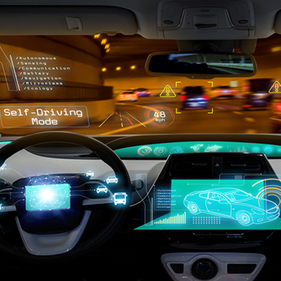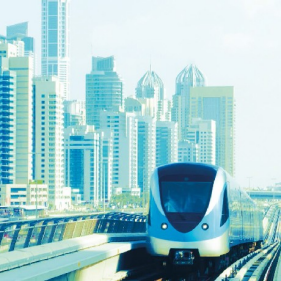Not too many years from now, the same kind of centralized databases and platforms that make today’s apps possible will give people access to driverless cars on demand and adjust the flow of city traffic, based on real-time data feeds. Commuters will be able to swap travel options on the fly, jumping from driverless ride-sharing to autonomous bus-train connections to avoid delay.
All this will be part of “smart mobility” – the future’s digitally connected approach to today’s travel problems. With smart mobility, digital platforms will be designed to manage the travel experience from end-to-end and allow consumers to plan, book, and pay for their trips through one outlet – even if several providers are required to complete the journey. Only a few clicks away, integrated travel services like route maps, real-time travel information, real-time seating choices, and advanced porter booking will be available.
Innovative mobility services are projected to generate $270 billion in revenue by 2040.
THE REWARDS OF BEING SMART
Right now, businesses are rushing to develop smart-mobility platforms and services, including travel operators like airlines and rail companies, digital giants such as Google and Amazon, and savvy technology startups. The rewards of unlocking smart mobility could be vast: Innovative mobility services are projected to see a fivefold increase in their share of travel spending by 2040 and generate an estimated $270 billion in revenue and up to $150 billion in profit for providers.
But are consumers ready to embrace smart mobility? Oliver Wyman conducted a survey of 7,500 consumers across Germany, France, Italy, China, and the United States, and it turns out the majority are ready to change their preferred mode of transportation and pay more to get access to these kinds of services. (See Exhibit 1.)
Exhibit 1: Consumers Are Willing To Pay Extra For Services
Percentage above basic ticket price for long distance travel and monthly commuting
The percentages of consumers who consider smart mobility important are overwhelming: In China, a stunning 98 percent of those surveyed ranked it as important or very important; in Europe, 93 percent; and in the United States, 83 percent. Among respondents 18 to 35 years old whose principal transportation is a private car, 97 percent said they would consider switching to public transportation to gain access to smart-mobility services. Even among those 65 and older, 76 percent said they would consider a change. For those who use public transportation, similar percentages would move to automobiles for smart-mobility advantages.
CONSUMERS READY TO SPEND MORE
The survey also found that 84 percent of respondents said they would shell out an additional fee to use integrated smart-mobility solutions. That includes 89 percent of millennials and Generation Z travelers and 75 percent of senior travelers.
Among commuters, many said they were willing to add a flat fee on top of their current transit bill each month for a bundle of smart-mobility services, similar to the way they opt to add premium channels to monthly cable charges. On average, commuters said they would pay 4.1 percent above their monthly commuting cost for multimodal, door-to-door journey planning and 2.9 percent more for real-time travel information and rerouting to avoid delays.
People also are willing to pay more for long-distance travel that involves smart-mobility services. Long distance, in this case, is defined as a trip of more than 100 kilometers. With these trips, consumers indicated they would pay on average 3.3 percent more, and as much as 5.8 percent more, for multimodal, door-to-door journey planning, and 2.4 percent more on average for real-time information and rerouting.
SEAMLESS CONNECTIONS
An example of a personalized, flexible, end-to-end travel service consumers say they want is the digitally connected multimodal hub that allows passengers to seamlessly transfer from one mode of transport to another. This could be created at a train station or airport where, using an app, a traveler can arrange a ride-share home but quickly switch to a subway if real-time data shows traffic delays. Another example would be the smart sensors and analytical tools that can help a city ease traffic congestion.
Beyond travel services, smart mobility includes activities that can keep passengers occupied during a trip – browsing shopping sites, taking online courses, and enjoying movies or music, for example – as well as those that offer options for the end of the trip, such as sightseeing or dining. It also can tie in related services, such as purchasing theft, casualty, and travel insurance. Like travel services, these would be provided via a digital platform that completes transactions with a click or two.
Here again, survey respondents showed considerable interest in improved access, with the addition of insurance services being the most popular. On average, respondents said that for long-distance trips, they would spend 5.4 percent more for the opportunity to buy travel, theft, and casualty coverage as part of the end-to-end journey and 2.5 percent more to access e-commerce sites. Daily commuters said they would pay an additional 5 percent for entertainment and 5.6 percent for educational offerings.
GETTING THERE FIRST
As autonomous and artificial intelligence technologies are increasingly incorporated into the daily lives of travelers, the race is on among travel operators, digital giants, and innovative startups to establish the first foothold and gain the advantage in smart mobility. The challenge will be to see which will develop more dynamic, personalized offerings and seize a competitive edge by controlling smart-mobility portals that seamlessly connect transportation options.













